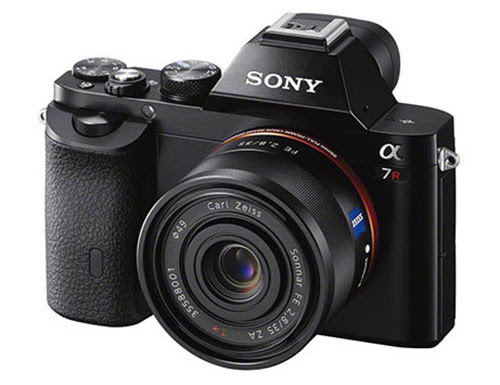While looking at cameras on the web, I came across a blatantly false claim by Sony. They wrote about the Sony Alpha SLT cameras:
"This changes everything.
Shoot with unprecedented speed and precision thanks to Sony's revolutionary Translucent Mirror Technology™. While traditional DSLRs depend on a reflex mirror to flip up and down with every shot, Sony's award-winning technology changes all that with its fixed-position, translucent mirror design…"

The Sony SLT mirror
That statement is definitely false. The first camera incorporating such a design was the Canon Pellix. The Pellix was first marketed in 1965. It was Canon's first 35mm Focal-Plane Shutter SLR Camera with TTL metering. It was also the first commercial production SLR that incorporated a fixed pellicle mirror. It employed a super-thin, semi-transparent film only 20/1000 mm thick that was used as a fixed mirror.

The Leica connection to all of this is the fact that the Leica Visofelx III was also available with a pellicle mirror. This was a special modification by Norman Goldberg. Goldberg is perhaps best known, in the Leica world, as the creator of the Camcraft N-5 electric motor drive for the Leica M2 and MP. However, also to his credit were several other inventions for Leicas and other cameras. The clip he designed to permit wearing an M Leica on the belt was widely used. He also offered a modification of the Visoflex reflex housing, involving either a beam splitter or a pellicle mirror. These too preceded Sony for a long time.

Leica camera with pellicle mirror Visoflex and Camcraft N-5 electric motor.
Please note the missing release lever and mirror action adjustment knob on the right side of the Visoflex
Pellicle mirrors never reached any nominal success; the main reason being that part of the incoming light is permanently diverted to the viewfinder, or in the Sony SLT cameras where part of the light is reflected to the phase detection autofocus system. This effectively lowers the speed of the lens in use. In addition, these mirrors are quite delicate and very difficult to clean. Cleaning, on the other hand, is important because any dust, smudges or other dirt would adversely affect image quality since the mirror is in the light path from the lens to the film or sensor.
In view of this it seems strange that Sony would even market a camera of this type and it is equally strange that they have to accompany it with obviously false claims.
Another false claim by Sony was the announcement that “Sony did it: A7 and A7r are the first modern full frame mirrorless interchangeable lens cameras.”

That claim totally ignores the Leica M line of cameras. Just like the Sony A7 and A7r, the Leica M cameras are full frame cameras with interchangeable lenses, and a whole load of additional features that Sony cannot match. The fact that the Leica M cameras have been on the market a lot longer than anything from Sony apparently did not prevent the above claim. One might argue that the Leica M cameras are rangefinder cameras, after all, that is what they are generally referred to. However, the newly formed terminology of mirrorless cameras refers to the fact that the camera does not use a conventional SLR viewfinder. Leica M cameras do match that criterion.

Leica M (240) with Leica Vario-Elmarit-R 70-180 f/2.8

Leica M (240) with Summilux-M 50mm f/1.4

Leica M (240) with Vario-Elmarit-R 28-90 f/2.8-4.5

Leica M (240) with Canon lens
These certainly are not the only times camera companies have made obviously false statements. A few years ago Pentax claimed that their 50mm f/1.2 lens was the first production lens with an aperture of 1.2, conveniently ignoring the fact that Leica introduced the 50mm f/1.2 Noctilux many years before in 1966.


Leica 50mm f/1.2 Nictilux, first introduced in 1966
A short while ago I read a report that Canon applied for a patent for a lens with a lens mount on both ends. It was heralded as something entirely new, previously only available with the help of lens reversing adapters. However, at the Photokina in 1966 Rollei introduced the Rolleifelx SL66 which had that very feature. The front of the lens had a Rolleiflex SL66 lens mount which allowed the lens to be mounted in a reversed position without the need of any accessories. Canon is just 50+ years late. While this particular example has no direct connection to Leica, it is another example where facts sometimes become secondary.


Rolleiflex SL66 with lens in reversed position
